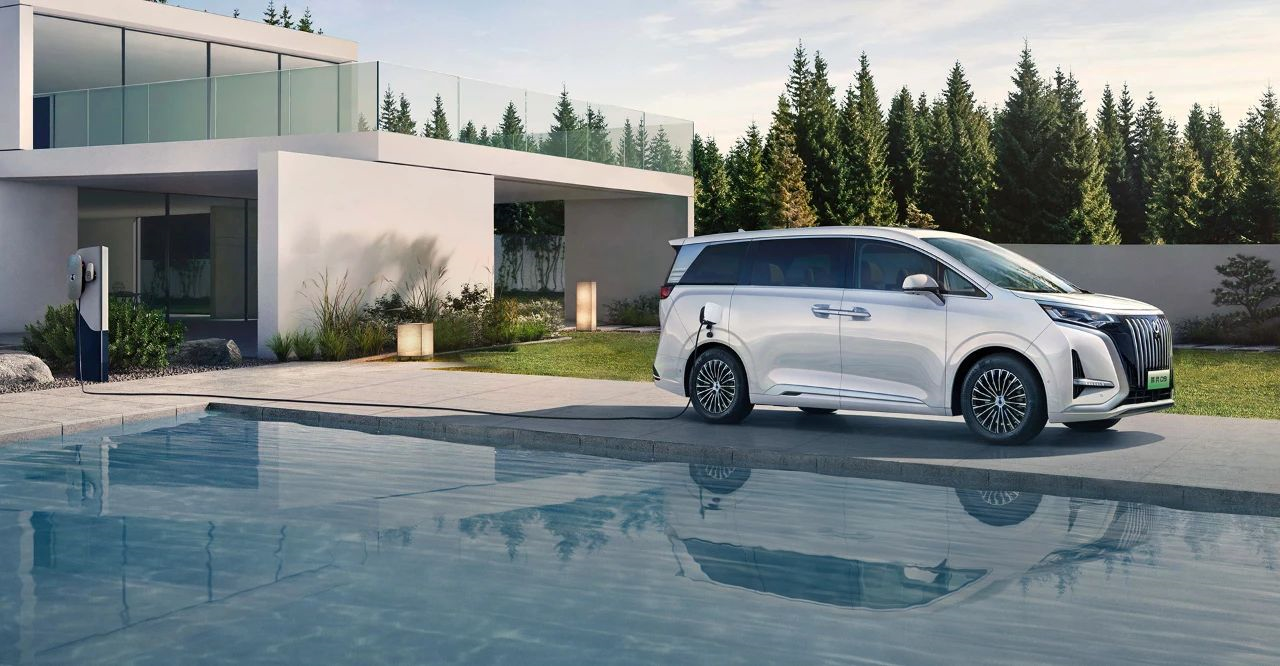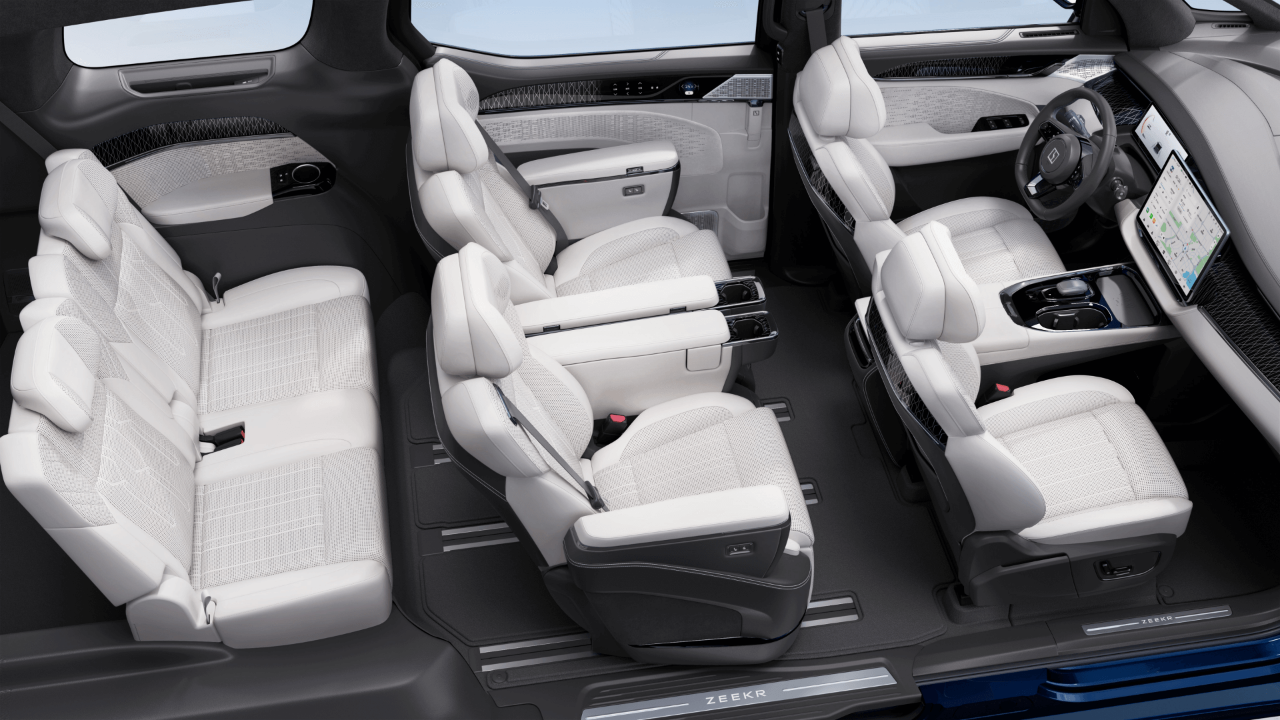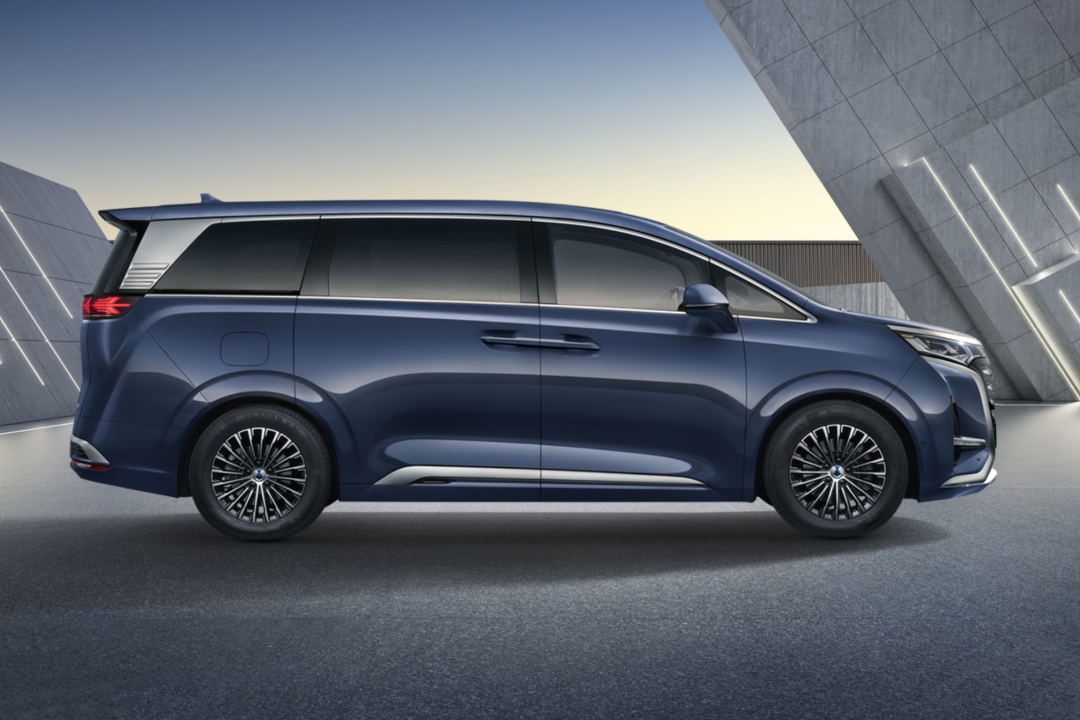Writing: CH_Chena Han
MPV may be the ultimate form of vehicle intelligence and electrification.
The China Passenger Car Association recently released the sales rankings for February 2023. While we were amazed at how quickly gasoline cars have been on the decline, we also noticed a new trend – the rise of electric MPVs, specifically the Byton D9, a mid to high-end MPV owned by BYD.
In February’s MPV rankings, the D9 ranked third with a score of 7,325, just behind the popular Wuling Hongguang and Buick GL8. In terms of cumulative sales, the D9’s sales in January and February even exceeded the GL8, ranking second.
In the background of the MPV market’s year-on-year decline, the emergence of the D9 has given us hope.
Undoubtedly, electrification and intelligence in vehicles are bringing in a new wave of MPV popularity.
Over the past six months, I have test driven several electric MPVs such as the Voyah Dreamer, the D9 and the Zeekr 009. And later this year, Ideal and XPeng will also launch their own electric MPV products.
The last time the MPV market was so popular was back in 2015, when the complete lifting of the Two-Child Policy brought unprecedented attention to the MPV market. At the time, the industry generally regarded it as another huge blue ocean, after the SUV market.
However, the results from the last time are already known to us. Despite the launch of many products, such as the GAC M8 (formerly known as GM8), GAC M6 (formerly known as GM6), Buick GL6, Geely Jiayi, and BYD Song MAX, the MPV market did not see a significant increase in sales. Even worse, overall sales have been on the decline due to the downturn in the commercial MPV market.
So, what’s different about this MPV trend compared to last time?
Can electrification really save the MPV market?
Electric MPVs, what benefits can users gain from them?
Many people are naturally worried about the electric MPV’s cruising range when they first hear about it. After all, the car is so large and carries so many people, won’t the battery run out faster?Actually, the electric MPV we discussed today refers to an electrically-driven MPV, which includes pure electric and primarily electric plug-in hybrid. However, regardless of its form, anyone who experiences an electric MPV deeply can discover the value provided by the electric drive to MPV users.
Firstly, the most obvious change is power improvement.
Electric drive enables MPVs to have greatly improved performance, and high-performance four-wheel drive MPVs become readily accessible. The DENZA D9 breaks 0-100 km/h in as fast as 6.9 seconds, the Voyah Dream Family in as fast as 5.8 seconds, while the Zeekr 009 can achieve 0-100 km/h in only 4.5 seconds, which is completely unimaginable for MPVs in the gasoline era.
Many people on the Internet think that MPVs do not need such powerful power, but only when seated in the driving seat can you understand the importance of power to the driver, especially when driving a large-sized MPV with your family, better power reserves and more stable four-wheel drive provide not only the stimulation of performance, but also a more confident, reassured sense of security.
Secondly, there is a significant improvement in driving performance.
In the past, many people were not willing to buy MPVs mainly because they felt like “driving a bus”. The reason why Honda’s Odyssey has received the favor of many dads is that it does not drive like an MPV.
The weak engine dragging a large vehicle, the loss of power and shifting speed sacrificed for comfort, and the body rigidity sacrificed for spaciousness all prevented traditional gasoline MPVs from being good at driving.
The transformation occurred with electric drive and the “steel plate” battery. More powerful, absolutely smooth electric power makes the MPV no longer clumsy to drive. The battery pack deployed on the chassis not only lowers the center of gravity but also greatly improves the chassis rigidity, making the body more stable during cornering, reducing the “bus driver feeling” when driving an electric MPV.
Finally, it’s about expanding the usage scenarios.
Nowadays, many people like to camp in electric cars or rest and work in them. The inherent large space of MPVs is obviously more suitable for these activities. Although we are still far from fully autonomous driving, an electric MPV is already a spacious mobile living space when the vehicle is stationary.
In addition to outdoor scenes such as camping, taking a nap in the second-row independent seats during the workday lunch break is much better than lying on an office chair or table, isn’t it?

In addition to these obvious added values, the great improvement in safety is also a key factor in electric MPVs overturning traditional models. The vehicle body structure newly developed for electric drive greatly compensates for the shortcomings of MPV body strength and rigidity.
For example, the DENZA D9 uses 75% high-strength steel and 23% hot-formed steel, with four doors using 1500 MPa protection bars.
For example, the Voyah Dreamer uses 70% high-strength steel and 23.6% hot-formed steel, and the car door is equipped with the world’s first 2000MPa laser-welded hot-formed door ring. In a crash test, it even twisted the A-pillar and couldn’t open the door of the jackpot Toyota Alphard.
The rationality of developing electric MPVs
Unlike the previous MPV boom driven by demand, the current MPV boom is driven by automotive intelligence and electrification, because an MPV may be the ultimate form of a car after full intelligence and electrification.
Imagine when fully autonomous driving is achieved, a zero-emission car will be a moving house. At this point, our requirements for cars will converge with those for houses, and space practicality and comfort will become the most important indicators. Therefore, MPV models born for multifunctionality, large space, and multi-person travel will be the most expected product form.Developing electric MPVs is highly rational under the guidance of this grand direction.

And the range anxiety of electric MPVs that consumers are worried about can be solved by plug-in hybrid for long-distance travel in the short term, and can be gradually resolved in the long term through larger capacity batteries, 800V high-voltage fast charging, battery swapping and other means.
In addition, with the rapid development of electric propulsion technology, even the current electric MPVs have energy consumption levels that are not as high as everyone imagines.

During this year’s Spring Festival, I drove a pure electric Voyah Dreamer for almost 2,000 kilometers, including 1,000 kilometers on the highway, with an average power consumption of about 23 kWh/100 km.
Previously, I drove the Zeekryue 009 in smooth urban road conditions, which achieved a power consumption level of as low as 17 kWh/100 km.
Based on this, the actual driving range of the current pure electric MPV can already exceed 400 kilometers, which is enough to meet the needs of some short to medium-distance family trips. However, judging from the sales of DENZA D9, plug-in hybrid MPVs will still dominate in the short term.
Family-oriented electric MPV, will it be the next trend?
Although electric MPVs are not new products, this category of vehicles has not yet reached its mature stage, so there are still many possibilities for product definition and functional form.
In my opinion, pure family-oriented MPVs may be the next trend, just as Ideal-ONE opened up the high-end SUV market for family use.

At present, most electric MPV products emphasize both “business” and “family”, but I think this dual-purpose approach is unrealistic because the demands of the family and commercial MPV markets are too different. It is impossible to perfectly satisfy both needs with one product.# The era of fuel-powered cars, even the strong ones like GL8 and Odyssey, can’t achieve the balance between commercial and home use. Why can electric MPVs do it?
In comparison, the demand for household electric MPVs has more room for imagination in the market and should be the main direction for manufacturers to focus on next. Especially with the resurgence of self-driving, camping and RV trends, consumers actually need a large mobile living space.
In addition to electrification and intelligence, further development of the household value of MPVs, and even towards the direction of small RVs, may be the only way to break the dilemma of the current MPV market.
This article is a translation by ChatGPT of a Chinese report from 42HOW. If you have any questions about it, please email bd@42how.com.
